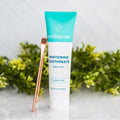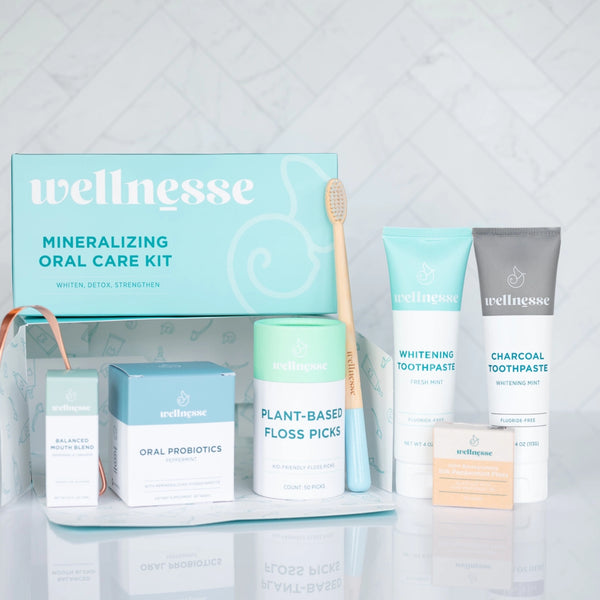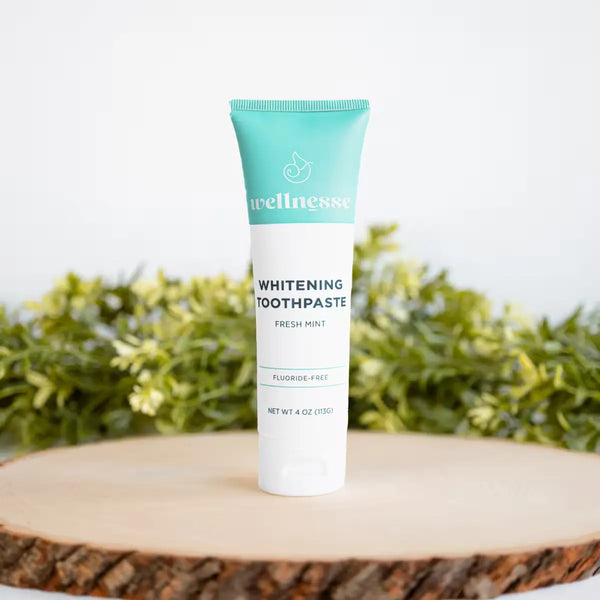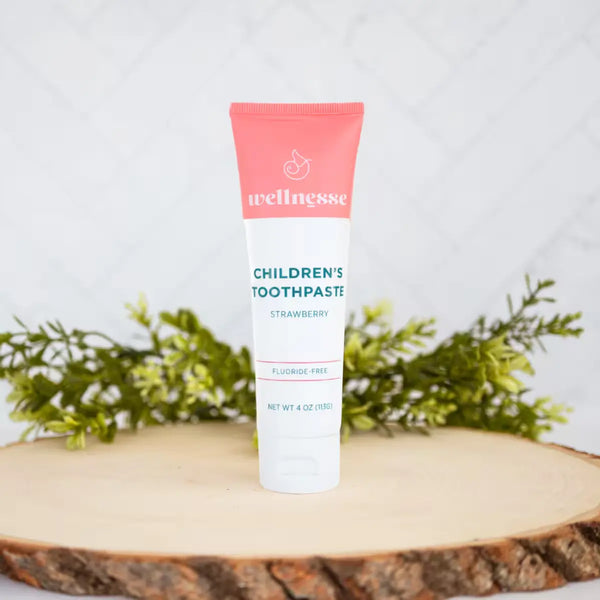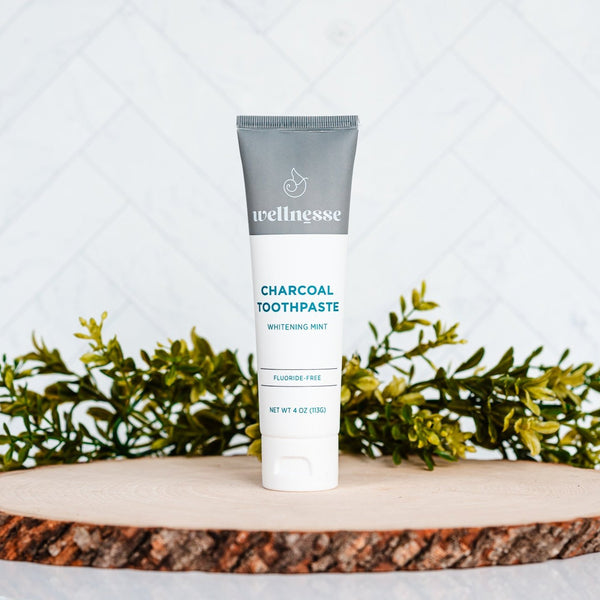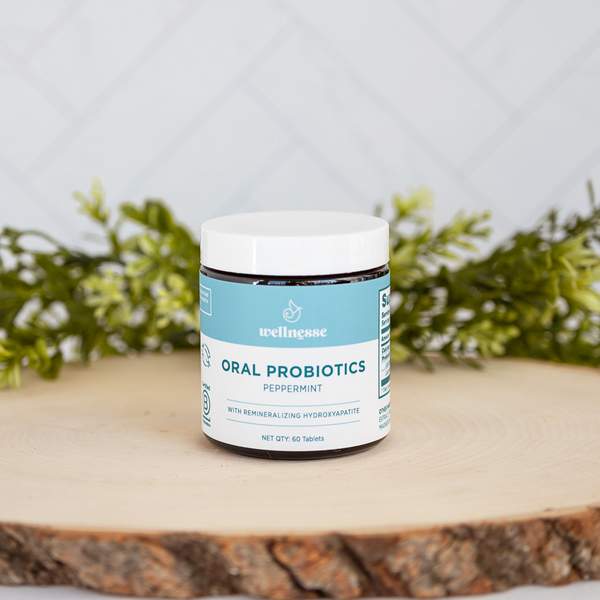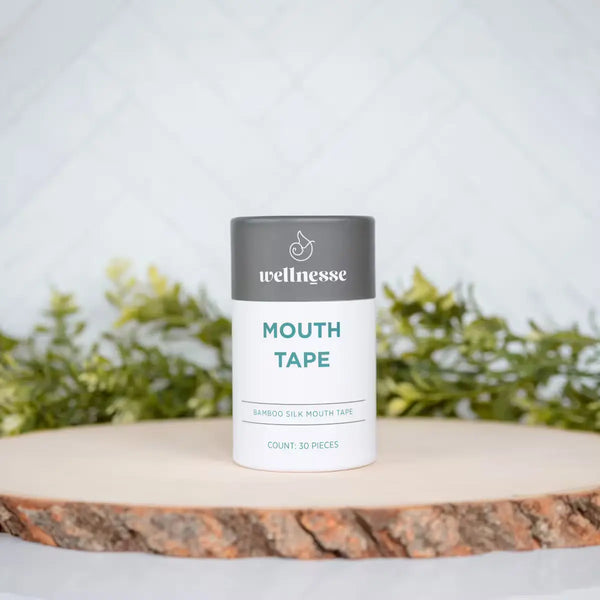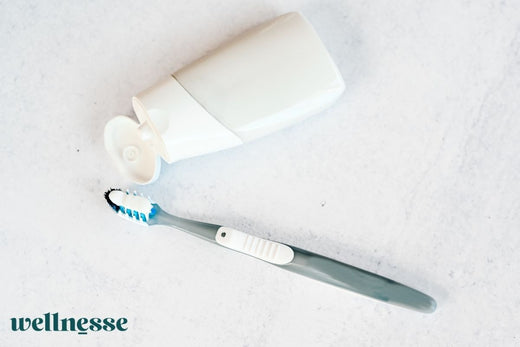For years, fluoride has been presented as the holy grail ingredient for dental health. It is included in toothpaste and mouthwash, applied at dental offices, and even added to many water sources. However, people have recently begun seeking alternatives with concern about the dangers of fluoride treatments to their oral health and overall health.
Why?
Replace all the dangerous oral care toxins with clean, natural formulas you can trust!
Fluoride: A Little History
Fluoride's popularity resulted from the discovery in the early 1900s that several small U.S. communities that drank from water sources with fluoride (a mineral found in rocks and soil) also had a lower rate of cavities. With this in mind, it became commonplace to add it to other U.S. water supplies.
There is one significant distinction to be made here, however. The water in the small communities contained calcium fluoride, which is fluoride in its naturally occurring form. This natural form is very different from the industrial fluoride that public health officials have added to other community water supplies.
Even more compelling, a study posted in 2020 found that short-term exposure to high fluoride concentrations quickly damages the enamel. An important finding of the study was that chronic exposure to concentrations several times lower (let that sink in) than the currently approved standards for fluoride content in tap water also caused similar enamel damage. Because of this, it looks like there is no "safe" level of exposure, and the information public health authorities (like the ADA and CDC) have told us on the dental benefits of fluoride may be far from complete.
Further investigation has shown no significant connection between fluoridated water (even naturally fluoridated) and a lower rate of dental caries (cavities). Instead, studies have shown an alarming correlation between fluoride use and multiple serious health conditions.
Is Fluoride Harmful?
Multiple studies have established a correlation between fluoride use and thyroid dysfunction. Fluoride effectively disables the enzymes in the thyroid, disrupting and decreasing the production of TSH (thyroid-stimulating hormone). An additional study conducted in India showed that children who consumed high fluoride levels experienced significantly lower levels of TSH (thyroid-stimulating hormone) than their peers who did not. Other evidence shows that hypothyroidism (under-active thyroid) is less likely to develop in people who drink non-fluoridated water.
While its connection to the thyroid is relatively widely known, not as many people are familiar with how fluoride can affect the brain. Since 2006, fluoride has officially been categorized as a developmental neurotoxin, with multiple studies linking it to poor cognitive performance and low IQ.
Studies have indicated that fluoride ingested by the mother (usually through fluoride toothpaste or water fluoridation) can cross the placental and blood-brain barriers to affect the baby's cognitive function development. Green et al. (2019) found that excessive prenatal exposure was associated with children's lower IQ scores. Additionally, a cross-sectional study in India showed that children's IQ was affected by fluoride exposure via the mother's drinking water and diet during pregnancy.
An analysis of more than 20 separate studies suggested the IQ points were an average of seven points lower in children exposed to highly fluoridated water.
The relationship between fluoride and the skeletal system is less clear than the two we have already mentioned. Evidence suggests that a happy medium is the best solution. One study conducted on multiple different Chinese populations found that bone fractures occurred more often with higher levels of fluoride. Overexposure can also lead to skeletal fluorosis, a condition in which the bones become hard and thick, resulting in stiffness, joint pain, and difficulty moving.
According to the Agency for Toxic Substances and Disease Registry (1993), certain populations may be particularly vulnerable to fluoride's toxic effects. If true, these groups would include the elderly, the diabetics, and those with poor kidney function.
All this to say, fluoride might not be the powerhouse ingredient we once believed it to be.
Fluoride Alternatives?
Fluoride is still a hotly debated topic because there is evidence for its harmful effects and potential benefits. If you are predisposed to or already struggling with thyroid dysfunction, you will likely want to avoid it altogether. If you are not currently suffering from health concerns or thyroid imbalances, avoiding fluoride as a preventative measure could still be beneficial.
The good news is if you are dedicated to a clean, more natural lifestyle, the odds are good that you are already avoiding multiple common fluoride sources (such as pre-packaged food and drinks and conventional dental products).
The truth is that there are many ways for you to protect, strengthen, and even remineralize your teeth without resorting to potentially toxic ingredients like this one. First, be aware of how much your lifestyle and diet affect your health. Modern diets are highly processed and contain sugars, preservatives, and synthetic ingredients. Opting for a diet of whole foods, healthy fats, and vitamins and minerals will help your body do what it was made to do. Avoid any pre-packaged or convenience foods, as these are often a source of unwanted fluoride.
Secondly, upgrade your dental routine. Switch out your old toothpaste and mouthwash for clean, non-toxic formulas that will provide you with all the benefits of conventional dental care without harmful side effects. This change may seem daunting, but it is surprisingly easy and doesn't have to break the budget. In fact, did you know that you can make your own toothpaste at home?
If DIY isn't quite your style, there are some great fluoride-free products available for purchase. In addition to being fluoride and glycerin-free, our Whitening Toothpaste works to reverse existing damage by strengthening and remineralizing the teeth. Instead of fluoride and harsh whitening compounds, we use all-natural green tea and a biocompatible mineral called hydroxyapatite, a naturally-occurring mineral in the teeth! Hydroxyapatite helps stimulate growth in your teeth (called remineralization) and can help your body repair existing cavities and avoid new ones. (If you're not a fan of mint, our Strawberry Toothpaste contains all the same powerful ingredients but with a fruity twist!)
With powerhouse ingredients like aloe vera to whiten, green tea to fight bacteria and prevent tooth decay, and hydroxyapatite to restore enamel, our all-natural toothpaste formulas pack a punch unlike any other. So go check it out! Your smile will thank you.
Our Top Fluoride Free Options
We craft effective oral care products that prioritize your well-being. Our fluoride-free formulas harness the power of nature's finest ingredients, like hydroxyapatite to remineralize and strengthen teeth. Whether you're looking for a classic whitening toothpaste or a charcoal-powered detoxifying boost, Wellnesse offers a healthy smile solution that's gentle and effective.
Whitening Toothpaste

Ditch the fluoride and embrace a brighter smile with our hydroxyapatite toothpaste! This dentist-approved formula uses the natural power of hydroxyapatite, which mimics the mineral that makes up your teeth. It doesn't just clean and freshen breath, it actively remineralizes enamel, corrects cavities, and removes stains – all without harsh chemicals. Soothe your gums and enjoy a healthy, confident smile with this natural, effective alternative.
Charcoal Toothpaste

Unveiling the dark side of clean! Our best-selling hydroxyapatite toothpaste gets a powerful upgrade with activated charcoal. This dynamic duo combines the remineralizing strength of hydroxyapatite with charcoal's natural ability to absorb and remove surface stains for a noticeably brighter smile. Enjoy an intensified whitening effect while the charcoal works its detoxifying magic, leaving your mouth feeling fresh and healthy. All with the same gentle, fluoride-free formula and natural ingredients you trust. Experience a whole new level of clean with our charcoal-powered hydroxyapatite toothpaste!
Oral Probiotics

Ditch the harsh chemicals and freshen your breath naturally with our Fluoride-Free Oral Probiotics! These convenient tablets combine the power of probiotics and hydroxyapatite for a healthy smile on-the-go.
Probiotics fight bad breath and support a balanced oral microbiome, while hydroxyapatite strengthens and repairs your teeth. Simply pop a tablet and enjoy long-lasting freshness and a healthy mouth, anytime, anywhere.
Strawberry Toothpaste
Brushing battles are a thing of the past with our fun and fruity Strawberry Toothpaste! This yummy paste keeps kids coming back for more with its delicious natural strawberry flavor. But it's not just about taste – our fluoride-free formula uses cavity-fighting hydroxyapatite to keep little smiles healthy and strong. We use only safe, gentle ingredients to clean teeth, remove stains, and freshen breath, all without any harsh chemicals that might irritate your child's mouth. Make brushing time a breeze with our yummy Strawberry Toothpaste!
Resources
Wells, Katie. (2021, May 29). Is Fluoride Bad for You? Effects for Thyroid and Body. https://wellnessmama.com/377757/fluoride/
Grandjean, P., & Landrigan, P. J. (2014, March). Neurobehavioural effects of developmental toxicity. https://www.ncbi.nlm.nih.gov/pmc/articles/PMC4418502/
Estimated “Threshold” Doses for Skeletal Fluorosis. (n.d.). http://fluoridealert.org/studies/skeletal_fluorosis04_/
The Untold Story of Fluoridation: Revisiting the Changing Perspectives https://www.ncbi.nlm.nih.gov/pmc/articles/PMC6309358/
How too much fluoride causes defects in tooth enamel
https://www.sciencedaily.com/releases/2020/02/200218143719.htm
